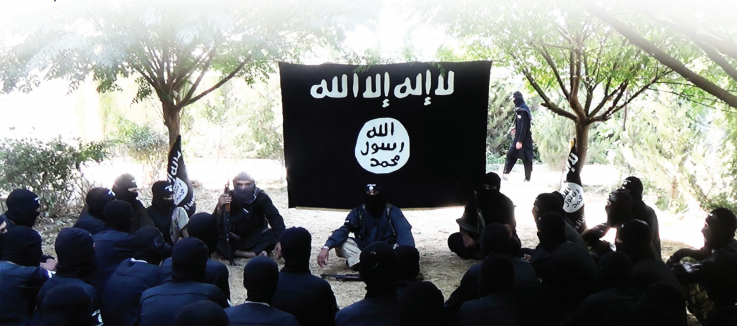
"While the administration has rightly focused on the Middle East, it should also pay attention to the ripple effects of IS in the Asia-Pacific region."
In places across
While not much has been reported on IS’ spillover into other Southeast Asian
countries, the same causes of concern in Indonesia Philippines , Manila Indonesia , if
members of the Moro Islamic Liberation Front (MILF), a Philippine-based Al
Qaeda offshoot terrorist group, traveled to Syria
or Iraq
The threat of
terrorism is not isolated to Southeast Asia but has also reached Australia Syria
has only further emphasized the rampant spread and persistence of terrorism outside
of the Middle East . Once again, the threat of
returning jihadists planning attacks is prevalent in Australia Afghanistan
and Pakistan East Asia . The
Japanese Foreign Ministry is investigating a video
posted to YouTube, which shows a Japanese national captured by IS members.
A recent press conference by China ’s
special convoy for the Middle East is evidence, according to some Chinese
scholars, that China is
watching the Middle East closely and is aware of its influence on China
The importance of
individual countries’ counterterrorism strategies cannot be understated.
However, a regional response is equally important. The Association of Southeast
Asian Nations (ASEAN) could help fill this gap. By the end of 2015, ASEAN has
pledged to strengthen its political-security cooperation by creating the ASEAN
Political-Security Community (APSC).
With Malaysia assuming the
chairmanship of ASEAN in 2015 amidst reports that IS is directly recruiting in Malaysia
Although the term
“global war on terror” has long lost favor, the global aspect is still
important. Coming full circle since 9/11, the crisis in Iraq and resurgence of militant Islam in Southeast Asia reinforce and reemphasize the
globalization of terrorism. While the administration has rightly focused on the
Middle East , it should also pay attention to
the ripple effects of IS in the Asia-Pacific region. As globalization proceeds,
the two regions will increasingly be linked by negative trends like the spread
of extremism in addition to positive ties like trade. As part of its Asia
rebalance policy, the United States
is continuing to reinvigorate diplomatic and defense relations with its allies
and partners in Asia . Security cooperation
with Asian partners under the Bush administration was often focused on
counter-terrorism to the exclusion of other issues, but the spread of IS
demonstrates the continued relevance of CT in the U.S. Asia policy portfolio.
Detachment 88, an
Indonesian special forces counterterrorism squad funded and trained by the United States and Australia United States
and Indonesia United
States
The drawdown of U.S. special forces in the Philippines is actually a positive sign of how
successful bilateral security efforts have been; Philippine security forces
have reached a point where they depend less on U.S. Washington and Manila United
States
In regard to both
countries, the United States United
States United
States U.S.
[Hannah Suh is
the Program Coordinator for the Asia-Pacific Security Program at the Center for
a New American Security (CNAS).
This piece
originally appeared on the Center for a New American Security’s website.]

No comments:
Post a Comment
Note: Only a member of this blog may post a comment.